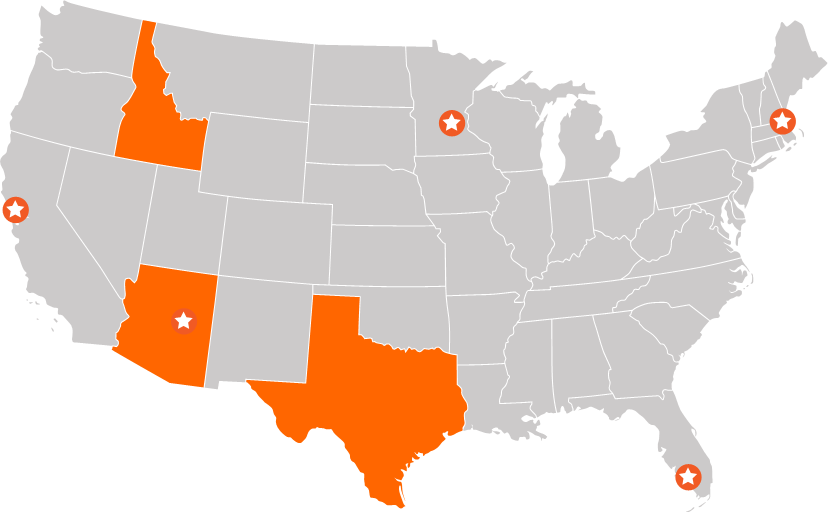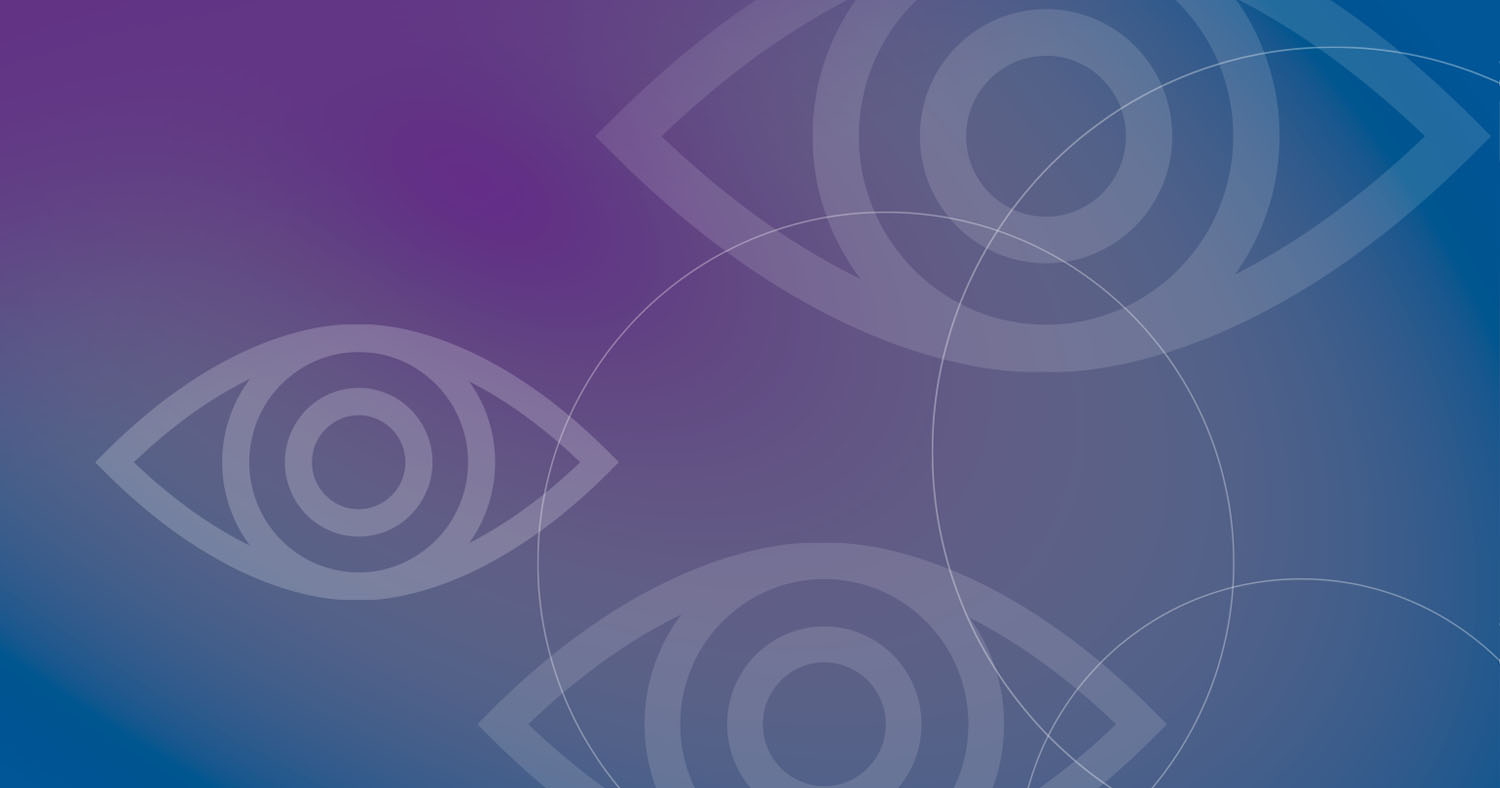A Learning and Sharing Opportunity to Improve Vision and Eye Health in Your State
The Community of Practice, titled Better Vision Together, will support 5-10 state- and community-level teams that wish to improve vision and eye health in at-risk, minority, and vulnerable populations of young children ages 0 to 5 years old. This Community of Practice will allow the teams to engage with their peers via regular communication, seek advice from experts, share resources and best practices, and identify solutions to shared issues that may include (but are not limited to) needed policy changes, evidence-based vision screening, improving access to eye care, parent/caregiver engagement, public awareness and education, and collection of vision data.
Better Vision Together Teams
State teams: Arizona, Idaho and Texas
Community teams: Minneapolis, MN; San Francisco, CA; Haverhill, MA, Naples, FL and Overgaard, AZ

Five state/community teams have been selected for the Better Vision Together Community of Practice and will receive an annual $10,000 stipend over the period of 3 years in return for providing process and outcomes measures data. An additional 5 additional state/community teams will be selected to participate in the COP but will not receive stipends or be required to provide outcomes data.
Project Background
The Better Vision Together Community of Practice is part of the Vision Screening in Young Children project, funded by HRSA’s Maternal and Child Health Bureau (Grant #H7MMC24738). The overall project’s goal is to improve eye health in at-risk, minority, and vulnerable populations of young children by the year 2021 in at least 5 states by implementing the public health actions (systems-level change) and building on proven best practices in such a way that diverse stakeholders are empowered to address state-level needs for children’s vision while adhering to evidence-based approaches.
Long-Term Outcomes for States participating in the Community of Practice (COP)
- At least 75% of the states participating in the COP have preschool age vision screening programs aligned with evidence-based and expert informed guidelines.
- Increase from baseline by 25% the number of families and caregivers participating as advisors and partners in state efforts (a minimum of 10% should be from underserved or rural populations) among states working with the COP.
- Increase from baseline by 10% the number of children 5 years and younger for whom receipt of a vision screening in the National Survey of Children’s Health is reported for those states working with the COP.
This project is supported by the Health Services and Resources Administration (HRSA) of the U.S. Department of Health and Human Services (HHS) as part of an award totaling $300,000 with a percentage financed by non-governmental sources. The contents are those of the authors and do not necessarily reflect the official views of, nor endorsement by, HRSA, HHS or the U.S. Government.
Team Summaries
Eyes on Learning (Arizona – State Team)
Goals:
- Increase the percent of children ages 0-5 who receive vision screening in Arizona
- Improve the quality of photo-screening in identifying children to be referred for eye care through training of screeners
- Increase percent of children receiving eye exams and treatments after a vision screening indicates a potential eye disorder/condition
- Develop a data tracking system
Key activities
- Increase awareness among pediatricians and families.
- Coordinate with state agencies to provide training on vision screening across the state.
- Implement a Community of Practice with Head Start and community health centers, etc. using photo-screeners to discuss strategies to get more kids to eye care when indicated
- Work towards system change to increase coordination and communication (feedback loop) between screening programs, eye care professionals
- Conduct an annual children’s vision health forum.
Year 1 Accomplishments:
Expanded access to quality screening by providing grants for photoscreening instruments to early childhood programs in schools, to health care providers and to community screeners to improve the number of young children who can complete a quality vision screening. Developed new data dashboard for Medicaid claim vision services in partnership with Arizona State University. Impacted policies and Standards of Practice for organizations conducting vision screening on young children (age 6 and younger) for using instrument-based screening.
Overgaard Ponderosa Screening Program, Overgaard, AZ (Community Team)
Goals:
- Increase the percent of children ages 0-5 who receive vision
- Improve education among professionals about children’s vision and eye health
- Improve rate of eye care visits among children identified on vision screening as needed follow up exams
- Develop a network of eye care providers in White Mountain Apache Reservation areas
- Increase parent education and engagement
Key activities
- Educate foster families about children’s vision and eye health and encourage vision screening.
- Identify eye care providers who will treat children in the White Mountain Apache Reservation areas.
- Provide education to professionals serving young children.
Year 1 Accomplishments
Developed a new vision screening consent form that includes parent education tool and permission for Lions Club to follow up on referrals. Initiating an improved system for tracking screening and referrals. Performing vision screening on American Indian children.
Better Vision Together San Francisco (Community team)
Goals
- Build a children’s vision coalition
- Perform a needs assessment
- Analyze data on glasses treatment for preschool youth
- Improve inter-agency coordination around children’s vision and eye health
- Initiate a data sharing system
Key activities
- Evaluate existing screening and referral programs
- Analyze data on parental attitudes, barriers and compliance to wear glasses
- Coordinate children’s vision health efforts among university, government and community organizations
Year 1 Accomplishments
Focus on systems change. Not providing vision screening services. Initiated discussion with 2 major health care systems to improve data collection around vision screening. In these systems, there has been an increase in the number of children directly referred to an eye care professional, with appointment made some day as failed screening. Developed white paper for state public health officials; initiating discussion around development of state Title V performance measures for children’s vision screening.
Naples Amblyopia Elimination Project, Naples, FL (Community team)
Goals
- Increase parent education and engagement in children’s vision
- Improve the tracking/data collection of referrals to care and completion of care/treatment
- Expand the membership of the team
Key activities
- Conduct focus groups with parents
- Increase vision screening in child care centers and pediatricians offices
- Build a system for coordinating follow-up with families on referrals to eye care
Year 1 Accomplishments
Screened over 90% of preschool children in Collier County through pediatric offices; achieved referral completion averages of 70%. Purchased SPOT for an underserved Hispanic community with limited access to early childhood education and medical homes. Collaborating with charities and other organizations to initiate universal screenings for preschoolers. Educating policy makers and funders about the need for screening all preschool children and reaching 100% referral completion.
Eyedaho Vision team (Idaho – State Team)
Goals
- Improve education and vision screening skills among child care professionals
- Increase the percent of children ages 0-5 who receive vision
- Increase vision screening in child care centers
- Build a statewide team
Key activities
- Coordinate efforts with Parents as Teachers
- Implement a data sharing system
- Conduct a statewide needs assessment
- Coordinate children’s vision health efforts among government, pediatricians and community organizations
Year 1 Accomplishments
Initiation of pilots at 2 child care centers in Boise: Lions Club providing screenings for children ages 3 and 4. Provided vision health information at three upcoming conferences. Planning to request development of state vision screening guidelines for pre-school age children.
Haverhill Promise of Children’s Vision, Haverhill, MA (Community team)
Goals
- Educate stakeholders why children’s vision is important
- Increase number of children entering kindergarten that have received a vision screening or comprehensive eye exam
- Improve the rate of pediatrician’s completing and documenting vision screenings and referrals to eye care
- Engage Spanish-speaking families with lower access to health care
- Assess professional development needs around children’s vision among child care providers
Key activities
- Work with public preschools for children with special needs to ensure kids are receiving comprehensive eye exams
- Implement professional development with pediatric practices
- Build relationships with the Mt. Washington Alliance
- Recruit parents for the team
Year 1 Accomplishments
Planned and executed a vision screening training event for community preschool providers, staff of pediatric practices, and community members. Created consistent vision screening referral forms and follow-up practices and list of eye care providers.
Early Childhood Vision Health Task Force, Minneapolis, MN (Community Team)
Goals
- Advance screening instrument usage at Head Start for English Language Learners in community settings (all students not just ELL)
- Increase follow up eye exams up to 50% (Baseline 33%)
- Assess vision care benefits in health plans and systems impacting children in Minneapolis
- Develop culturally relevant educational materials for parents/caregivers
- Improve referrals for children with special health care needs
Key activities
- Develop protocols for use by nurses and multi-lingual staff working with preschool age children to include # of times contact families to remind to set eye care appointments with calls initiated by staff speaking language of the family. Collaborate with Family Voices
- Train parents to provide parent to parent support
Year 1 Accomplishments
Initiated partnerships with major health systems, local jurisdictions and collaboration with the UMN Center for Leadership in Maternal and Child Public Health. Developed tracking, referral feedback loops between education and health providers of services. Meeting with state legislative and executive staff to establish a vision health commission.
Better Vision Together Texas (Texas- State Team)
Goals
- Improve parent education and follow through on vision care
- Build a diverse team
- Increase the number of children ages 3-5 receiving vision screening in school districts partnering with Better Vision Together Texas team
- Increase the percentage of children receiving follow up care and treatment after a failed vision screen
- Use data to demonstrate statewide need for early childhood vision screening and leverage new resources
Key activities
- Create 3 pilot programs to test parent/caregiver education models
- Implement Pre-k vision screening data sharing
- Implement vision screening data collection and tracking in select school districts
Year 1 Accomplishments
Initiated a vision screening program for a large pre-K program in Houston area; screened over 2,000 students. Increased engagement of partners in understanding and changing systems around the importance of parent/caregiver eye health education to help close the gap between children being screened and receiving necessary follow-up eye care.


